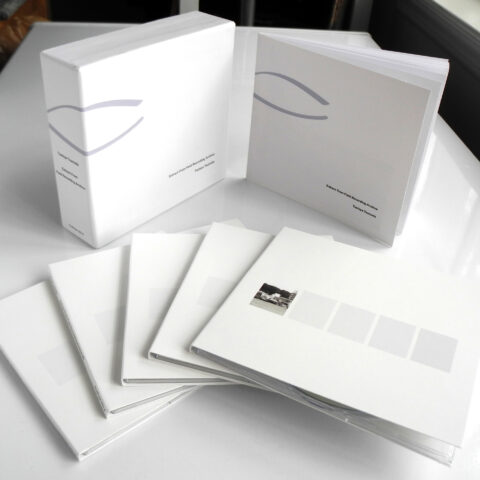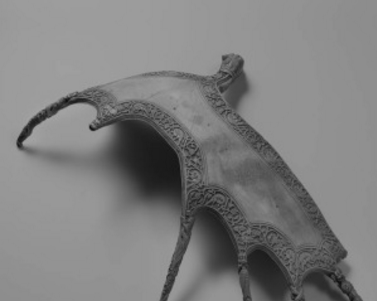About ten days ago i received my USBPre2 after waiting for three (long!) weeks. This is not a technical review but more about my impressions and thoughts after integrating it in to my home and field recording setup.

1. Why?
I had been using the Mbox2 with my laptop (MacBook Pro) and desperately needed to upgrade. I was never a fan of it and the only reason I had it was to run Pro Tools. With the release of Pro Tools 9 the time came for me to upgrade and also invest in something with better preamps, conversion and support for higher sample rates (96KHz or 192KHz). I initially planned on either buying the Mbox3 or RME Babyface until I heard of the USBPre2 and the possibilities of using it standalone with an external USB power supply. Thus began my gear lust saga.
Since I rented out gear when I needed it, my field recording gear had largely been non existent (except for the Zoom H4n and Sennheiser MKH416 – although there have been new additions lately). The USBPre2 seemed like a welcome addition for better recordings in the field.
2. First Impressions:
After the long wait and the trip to pick up the USBPre2 (and almost getting bit by a dog) I returned home in obvious excitement. Here’s what I thought when I unpacked it:
- It looked smaller than I expected (probably the effect of drooling at hyped marketing material for many weeks!)
- Fantastic build quality (infinite steps up from the plastic junk called the Mbox2)
- Ergonomic design – mic/line/aux inputs on the left, USB/SPDIF/Aux outs/Headphone outs on the right, line outs/optical IO/DIP switches at the back
- Meters! Who wouldn’t love a 23 -segment multi-colour LED meter which indicates both VU and peak (PPM) ballistics?
- The USB cable that comes with it firmly fixes itself into the port – making it tough to ‘accidentally’ unplug it
3.Digging Deeper:
- The Front Panel

The most commonly used functions in a studio are available on the front panel – input source selection, output level control, headphone level control, meter selection, headphone mono switch and direct monitoring mix control. There are indicators for the low cut (at 80Hz, 12dB/8ve), 15dB pad and phantom power. The indicators light up if any of those options are enabled for either or both input channels. It’s obvious that Sound Devices designed the USBPre2 keeping in mind the growing number of ‘headphone editors’ along with it’s experience in designing field recording equipment. The preamp/pc output mix knob and the output level control knob are spring loaded and can be ‘pushed in’ during field recording use. This along with the design of the other switches decreases the chances of accidentally hitting the wrong switch right when that elusive thunderbolt strikes after recording hours of boring rainfall!

- Right Panel

The Aux outputs are unbalanced which is useful for recording to a handeld recorder for example. I loved the provision of both 1/4th” and 1/8th” outputs for headphones – saves me the trouble of carrying a convertor every time I use my IEMs (Etymotic hf5). Also S/PDIF i/o = wonderful! - Left Panel

Options for connecting a variety of input sources – line level TRS inputs, XLR microphone inputs and unbalanced phono inputs
(do those old cassettes need a transfer?). - Back Panel

Switchable Mic/Line outputs, TOSLINK optical i/o and the DIP switch panel with a removable rubber cover (protection in the field). - The Bottom

Instructions for entering stand-alone mode and the legend for the dip switches (control for routing, limiter, low cut, pad, metering options, sample rate in standalone mode and most importantly – input source lock). - The Top Panel

Just incase you forget which sound interface you are using.
4.Integration
Integrating it into a home studio setup is easy – connect microphones, speakers & USB cable and you are set to go. It’s a class compliant device – which means no drivers..plug and play. Except, for working at higher sample rates on Windows you will need the ASIO driver (available on the Sound Devices website).
Integrating it in to my present field recording (humble) setup was a different ball game though. It so happens that the “line inputs” on the Zoom H4n are nothing but Hi-Z unbalanced inputs (thank you Zoom/Samson for being SO clear in your documentation – NOT!). This meant that I had to make a 18dB in-line pad if I didn’t want the inputs on the H4n to distort. I found a good tutorial here (along with a very detailed comparison of field recorders). It’s not the best sounding solution, but it works (until my PCM D50 arrives!!).
5.What does it sound like?
The difference in sound was audible on my headphones (Beyerdynamic DT990 Pro) even when I played back an MP3 file (yes, kill me for saying MP3). The stereo image has more detail, the low end is focussed and over all it seems more balanced across the frequency spectrum. The headphone amplifier is clean and has enough room for amplification (even when using a 250 ohm headphone). The preamps are nothing short of fantastic (same as the Sound Sevices 700 series) – clean, lots of headroom and beautiful sounding.
Here’s some dirty street ambiance I recorded simultaneously to Pro Tools and the Zoom H4n, using the USBPre2 as a front end with the Audio Technica BP4025 stereo microphone. The USBPre2 was setup to route the preamp outputs to the aux outputs (“HP Mix to Output”) which was connected to the H4n using the in-line pads. The results are unprocessed except for being normalized at -1dBFS.
Convertor comparison – Sound Devices USBPre2 & Zoom H4n on SoundCloud
[soundcloud url=”http://api.soundcloud.com/tracks/18104335″ params=”show_comments=true&auto_play=false&color=538169″ width=”100%” height=”81″ ]
The difference in sound is quite obvious. The USBPre2 sounds more clean and balanced across the frequency spectrum. This test is only a comparison of the sound of the two convertors (and how the inputs on the H4n affect the sound). The next part of this series will have more detailed comparisons with a variety of gear and source material.
6.It would be nice if…
After a couple of field recording sessions I found the dip switches to be a bit cumbersome. If I needed to enable to the HPFs, pads or phantom power I’d have to flip the box around, consult the legend, dig out a tiny screwdriver/pen/thin-long-object and hit the right switches. I wouldn’t have a problem if the box was 2 inches longer and had these commonly used options on the front panel. The other switches are mostly for set-and-forget controls depending on your working style.
Any other complaints/regrets? None so far! It’s worth the price and definitely one of the best pieces of gear I’ve ever bought. If you have second thoughts about buying this – you shouldn’t!
7.Power in the field
In my research it seemed like most people were powering the USBPre2 on the field with the Lenmar PowerPort portable battery (thank you Michael Raphael and Shaun Farley for the discussion on Twitter).



I decided on ordering the New Trent IMP50D simply because it was available where I live and seemed reliable. Unfortunately/fortunately I ended up receiving the U2O iWalk15000 (confusion with the order on Ebay). While I was skeptical, it so far seems impressive. I’ve powered the USBPre2 for ten hours and lost about 50% of battery power (capacity rated at 15600mAh, which is WOW). It also has switchable DC outs (12V/16V/19V). If I get a 12V to 5V convertor I’ll be able to power the H4n/D50 with it. Everything seems good so far (although to say the user guide was mildy hilarious would be an understatement).
In Part2 of this series I will run controlled tests and compare the preamps/convertors with other commonly used gear and also include more recordings. Look out for it soon!





